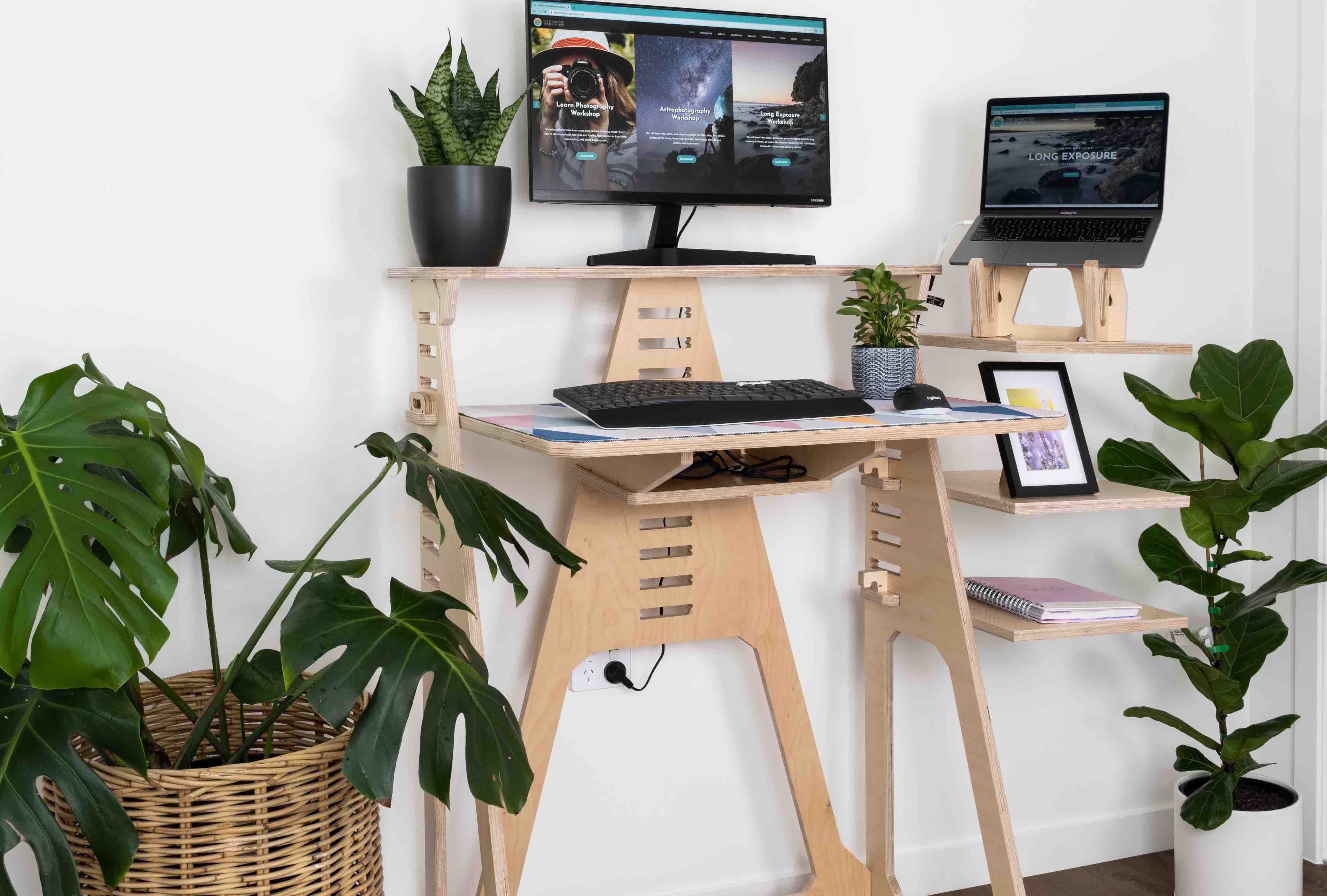Maximizing the Benefits of Standing Desks: A Quick Guide

The rise of standing desks as a popular alternative to traditional seated workspaces has sparked curiosity and questions regarding their usage and advantages. To navigate through this terrain and shed light on the benefits and best practices, let's explore some of the most frequently asked questions about standing desks.
Q1: How high should a standing desk be?
Achieving the optimal desk height is paramount for ergonomic comfort. For most individuals, setting the desk height to allow elbows to form a 90-degree angle with hands resting comfortably on the desk surface is ideal. This position helps maintain a neutral wrist posture, reducing strain. You'll also want your screen or monitor to be directly in eye view, so as not to bend or strain your neck.
Q2: How do you stand at a standing desk?
Embracing proper posture is fundamental. Stand tall with shoulders relaxed, avoiding slouching or leaning forward. Distribute your weight evenly on both feet, keeping them flat on the ground, and avoid locking your knees. Gently shift positions or take short walks to alleviate muscle fatigue.
Q3: Will a standing desk improve my neck or back pain?
While standing desks can offer relief for some individuals, finding a balance between sitting and standing is crucial. Incorporating movement breaks, maintaining good posture, and adjusting the desk's height properly contribute to alleviating neck and back discomfort.

Q4: How long should you stand at a standing desk?
Start with short standing intervals, gradually increasing standing periods over time. Experts recommend alternating between sitting and standing every 30-60 minutes. Implementing an adjustable desk allows flexibility and adaptability to your comfort levels.
Q5: How to use a standing desk effectively?
Tailor the desk height to elbow level for comfortable use. Wear supportive footwear to reduce strain on your legs and back. Shift your weight between both feet, avoiding leaning on the desk, and integrate anti-fatigue mats or movement tools for added support and comfort during prolonged standing.
Q6: What are the benefits of a standing desk?
Standing desks present multifaceted advantages. They combat sedentary behavior, improve posture, boost energy levels, enhance blood circulation, and potentially reduce the risk of health issues associated with prolonged sitting, such as obesity and heart disease.
Q7: What's the best way to use your desk for both sitting a standing?
To make switching between sitting and standing as fluid as possible, many people opt for a workspace that incorporates both setups, like the

Standing desks represent a tangible shift towards healthier work practices. Understanding their correct usage and benefits equips individuals to harness their potential fully. By implementing these insights into your daily routine, you can create a more dynamic, comfortable, and health-conscious workspace.
If you have any further questions about how a standing desk might help you, or simply want to chat to us about anything WFH, please don't hesitate to reach us through the chat function on our website, or email our friendly customer service team.



